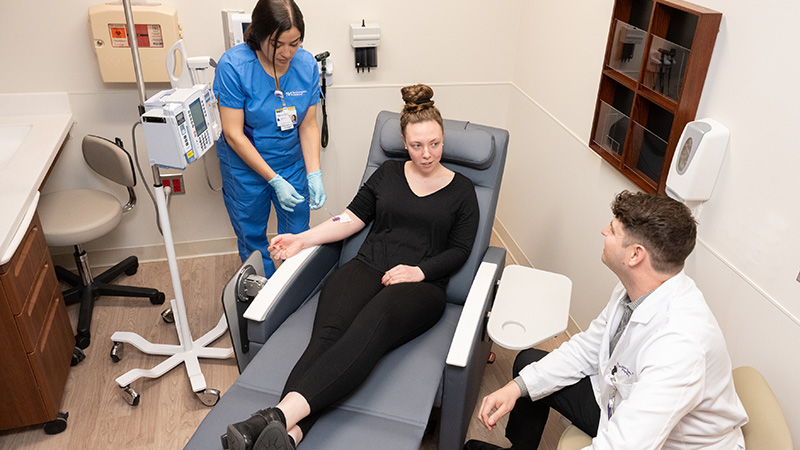Communicating Through Art
Creativity Meets Body-Mind Healing
From a very young age, children doodle as a way to make sense of their worlds and communicate their observations. While many people say, “I’m not an artist,” and stop creating art as they age, using art as an expressive tool never stops benefitting mental health.
Linda Ziert, MA, ATR, registered art therapist and expressive therapist at Northwestern Medicine Woodstock Hospital, first recognized the impact of art therapy while observing an art therapy group in action. “I saw how kids who were normally very hardened would share what was going on through their artwork. It was a really transformative way to break down barriers with communication,” she says.
Not an Art Class: About Art Therapy
Registered art therapists use art and therapeutic processes to help individuals cope with physical and mental health challenges. “Here on the Inpatient Behavioral Health Unit, we use art therapy a lot for self-management and relaxation skills training, and to help treat symptoms of depression, anxiety and psychosis,” says Ziert. “We find that for people experiencing a numbing of emotions, art therapy can tap into the sensory feeling parts of the brain.” Research indicates there are many parts of the brain at work during art-making, depending on the type of media and art task being utilized.
It’s a transformative way to break down barriers with communication.— Linda Ziert, MA, ATR
Art therapy can be used to:
- Improve cognitive functions, such as problem solving and information processing
- Build self-esteem, self-awareness and insight
- Express thoughts and feelings
- Reduce anxiety and improve relaxation
Art therapists often incorporate other forms of therapy as well. For example, cognitive therapy can be used to encourage patients to draw negative or unproductive thoughts, and then create imagery of more positive, helpful thoughts. Additionally, art therapists help people process difficult experiences. This can be especially beneficial for people going through significant life events like a diagnosis of cancer, a divorce, grief or trauma. It assists with communication and provides a safe way to share one’s personal story.
Assessing and Processing
In art therapy, assessing the art piece is a separate facet, which provides supportive insight into diagnosis. For example, the ways the person forms lines and utilizes space, or the objects drawn could all provide clues to what is going on in the person’s mind. Art therapists are also trained to consider a person’s observable behaviors and emotions, all of which aid in developing goals and effective treatment plans.
Many color theorists claim to understand the psychology of color. However, Ziert cautions against putting too much weight on these claims in art therapy assessment.
“While there is such a thing as warm and cool colors connected to mood states, that’s just one piece of the assessment,” she says. “There are other variables, such as one’s ethnicity and spirituality, to keep in mind. It’s important to listen to what the individual is saying in attaching their own meaning to their piece.” Further, it is the art therapist’s role to assist individuals in understanding how they may relate to their artwork to gain personal insights.
Stress Relief for Adults Too
Go ahead and break out your markers — art-making isn’t just for kids. Research has shown that cortisol, a hormone that is released during times of stress, is significantly reduced when creating art. You can reap these benefits in just 45 minutes.
When you experience a threat, a chemical called adrenocorticotropic hormone (ACTH) is released in your brain. When creating art, the hypothalamus, or the part of the brain that coordinates the nervous system and pituitary activity, signals to your adrenal glands to lower the levels of cortisol in your system. This reduces the feeling of stress and, in some cases, even lowers blood pressure.
“I’ll encourage people to do artwork at home for self-expression and relaxation,” says Ziert. Some at-home options you can try:
- Select an emotion and reflect on what it might look like if it were a line, shape, color or symbol. Then, create with that in mind.
- Focus on a goal you want to achieve, such as improving physical health. Then, flip through a magazine and cut out images and words to support your goal. Create a collage that reflects that positive change.
- Journal about the art-making process and what a piece might mean to you.
Next time you’re feeling stressed or a little blue, consider producing art to dig deeper. Your mind and body will thank you for it.





